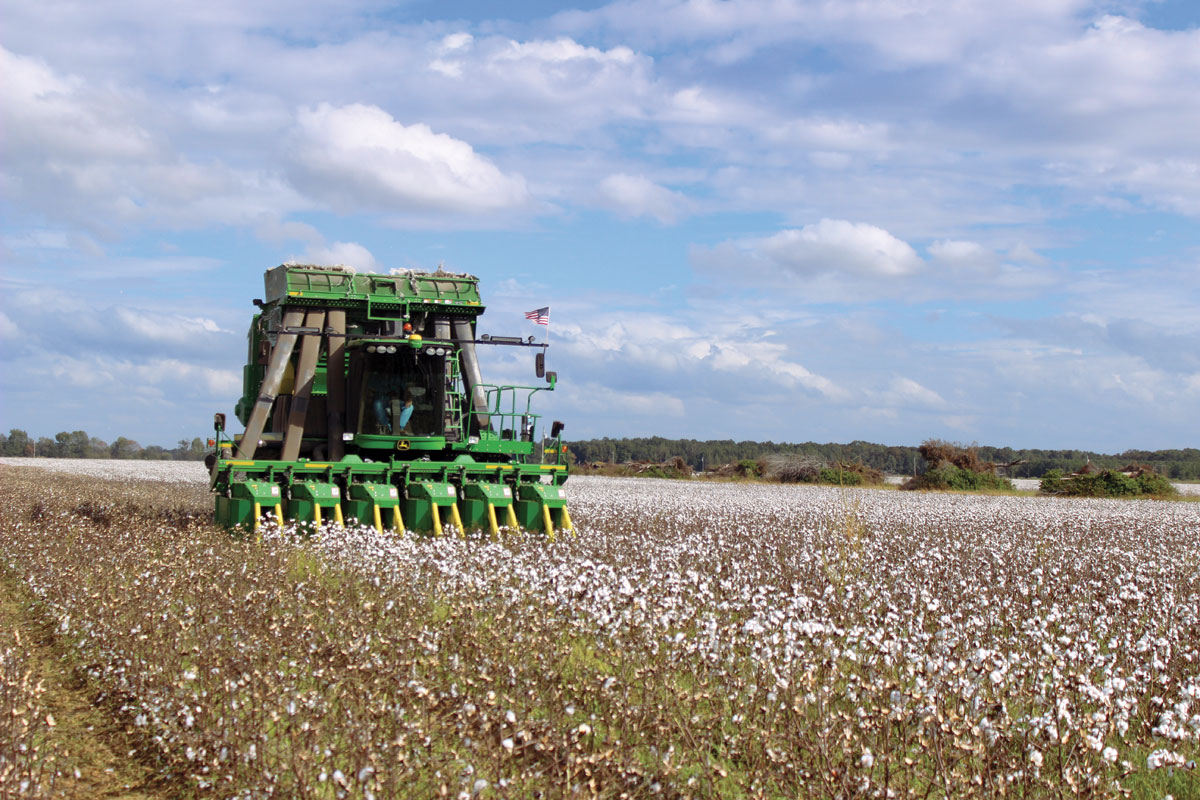
Cotton is planted, harvested for the first time in White County in nearly six decades
Fall and harvest season always brings a buzz and frantic field work as farmers hurry to get their crops in before onslaught of winter weather. This year in White County, Ark., there has been a harvest buzz of another sort, for the first time in almost 60 years, there was cotton planted in the county.
It was no small acreage either. Griffithville, Ark., farmers Billy W. Tripp and Justin Porter combined for approximately 2,200 acres of the white gold. Planting cotton, much less 2,200 acres, was not a decision made lightly or without countless hours of planning. It was not an experiment. These farmers were serious about this decision and went at it head on.
“It was purely a matter of economics for me,” Billy said. “With current grain prices, it was getting harder to make a profit. I studied long and hard, and traveled all over the country talking to other cotton farmers and ginners. It was worth the gamble to grow some cotton.”
Neighboring farmer and close friend Justin Porter was involved in the discussion about cotton from the start and agreed his balance sheet dictated he needed to do something different.
“We have been growing corn, soybeans and rice for years,” Porter said. “Grain markets just kept getting weaker. We knew we had good enough ground to grow cotton, so we made the determination it was worth the investments to grow some cotton.”
Originally, the two farmers planned on approximately 800 acres of cotton each. But as grains markets crashed, and weather permitted some early planting, acreage was increased to 1,100 each. The decision to plant cotton in White County was not met without its skeptics. Talk of cotton returns was the subject of many coffee shop discussions and even some “ag experts.” But Billy and Justin did not let the coffee shop talk discourage them. Afterall, it was their balance sheets they were concerned about. Growing cotton has some similarities to other row crops. Per acre input costs for cotton are similar to corn and rice. Irrigated cotton performs much better than dryland cotton. Much like other crops, cotton is susceptible to insects and disease and must be treated accordingly. From an equipment standpoint, no special tractor or tillage equipment is required for cotton. Soil preparation is critical before planting cotton. Hippers are used to prepare a raised bed for the cotton seed which gives it a good foundation to germinate. Most farmers used separate planters for grain and cotton. Cotton seed is totally different from grain seed and converting a planter between the two is not recommended.
The largest investment for cotton farmers today is the picker. Compared to tractors, combines and other farm equipment, pickers by far are the most expensive pieces of equipment in the industry.
However, the investment must be kept in perspective and return on investment is the key. The new 6-row, round bale picker is a behemoth. Not only does it pick six rows of cotton at 4 to 4.5 miles per hour, it compresses the cotton into 5,000-pound bales (10 bales), wraps the bale in a plastic wrap, then drops it in the field for a tractor to transport to a central location where the bales are picked up and transported to the gin. Each bale has an RFID tag on the wrap which tracks the cotton from the farm through the ginning process. Human hands never have to touch a bale of cotton.
Nowadays, cotton harvesting only requires two people at most. The picker operator and the tractor driver to transport the round bales to the storage lot. On some farms, the picker operator may move the bales in the morning before he starts picking or during harvest delays due to weather. Grain harvest requires a combine driver(s), a fleet of grain buggies (and drivers), and a fleet of trucks (and drivers).
Labor saving alone was a huge factor for Billy and Justin as they are using one picker for their combined 2,200 acres.
“It was a no brainer for us,” Billy said. “We booked a lot of our crop early at a good price. We are tickled to death with our yields. We would have been really proud if we hadn’t received that 10 inches of rain in late August and September. That caused some boll rot on the lower bolls. But, nothing you can do about that. We still came out OK.”
Gin logistics did require some extra planning. The nearest cotton gins are in northeast Arkansas, some 80 to 90 miles away. Thanks to the help of Black Oak Gin Incorporated, in Black Oak, Ark., Billy and Justin were able to work through the logistical problems. The farmers haul flatbed trailers loaded with round bales to Black Oak Gin Inc., each day.
While there is still some cotton left to be picked, plans are already being made for 2019. With the hurricane devastation this fall, and continued good demand, the outlook for cotton prices is good. Billy and Justin consider their first cotton crop a success. So much so, they plan huge increases in cotton acres next year.






